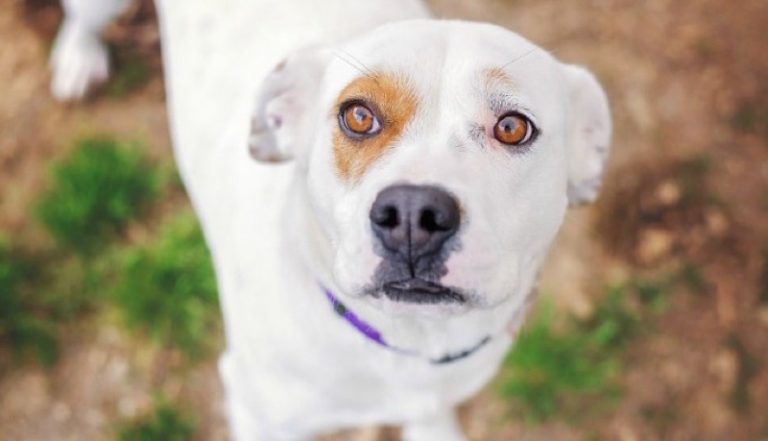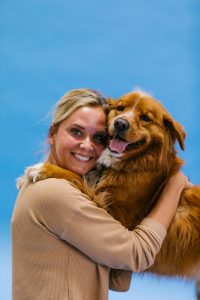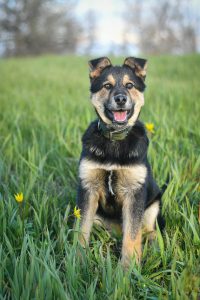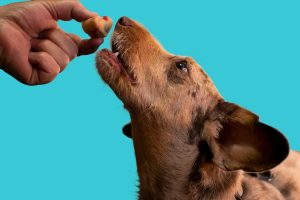We all have phobias. Some of us fear of spiders. Others, freak out when they have to visit the dentist. It is normal to be afraid. And when it is normal for us to be afraid, why shouldn’t it be for our canine friends as well? Yes, dogs can get afraid as well. What you have to learn is how to recognize and handle fear in dogs.
Can you tell your dog is afraid? Do you know the symptoms of a fearful dog? How can you help your dog address his fear? We discuss all of that and more.
Why your dog is afraid?
You have to understand that same as we have phobias, dogs have them as well. You have to familiarize yourself with the signs. But first, let’s talk why are dogs afraid.
Fear in dogs can be triggered by many factors, most of them, external. For starters, loud noises like thunder and fireworks are a common cause of fear.
You have to understand that our dogs hear a wider range of frequencies. We can detect sounds at 20 hertz and up to 15,000 or 20,000 Hertz.
Dogs, on the other hand, can hear in the range of 40 hertz, but up to 60,000 Hertz. A classic dog whistle can produce sound between 16,000 and 22,000 hertz. We might not be even able to hear it, but dogs can.
In many cases, the cause of the fear is not obvious, because we might not be even able to hear it. Your dog is hearing the thunderstorm before you. What you can do is keep a note of all the fear triggers and factors.
Whatever you do, remember that fear is a natural reaction to certain situations. Your dog will show he is afraid. And if you know how to recognize and handle fear in dogs, you will be fine. But in some cases, no matter what you do, there is no calming the dog.
Symptoms of fear in dogs
Symptoms and signs can include involuntary actions, but also voluntary actions. Your dog’s behavior may change, but he will also manifest body language signs that show he is afraid. Let’s take a look at different groups of signs of fear in dogs.
Body language signs
In most cases, your dog communicates with you using body language. Gestures like a wagging tail and bared teeth are common and obvious.
When it comes to showing signs of fear, these are the body language symptoms to watch for:
- Tail tucked between the back legs
- Flattened ears
- Raised hair on the back of the neck
- Avoids eye contact
- Yawning
- Lip licking
- Scratching himself, even though he was not itchy
- Dilated pupils
It is worth noting that if you notice the signs of fear in his eyes, you should avoid trying to make eye contact. Looking directly in the eyes of your dog when he has diluted pupils might be a sign of aggression.
Your dog might perceive your eye contact as aggression. Try to look out of the side of your eyes to observe your dog.
Behavior signs of a fearful dog
Your dog will show signs of fear through body language, but he will also exhibit specific behavior. Learn how to recognize and handle fear in dogs using behavior signs as guidance.
These symptoms include:
- Growing
- Biting
- Pacing
- Whining
- Submissive urination
- Barking
- Clinginess to owner
- Destructiveness
Physical symptoms
Last, but not least, there are physical symptoms your dog shows that he is afraid. Remember, your dog is not able to control these physical changes.
They are involuntary actions:
- Drooling
- Trembling
- Dilated pupils
- Panting
- Loss of control over bowels and/or bladder
How to recognize the symptoms
It is critical that you observe what is happening every time your dog is afraid. After a while, you will be able to pick up on the symptoms quickly and easily and prevent them before happening. For example, if you observe closely, you can notice your dog is getting ready to bark at thunderstorms, and pet him, calm him before he does.
Watch your dog and the environment closely every time your dog is afraid. This will help you determine the triggers, but also the symptoms. For example, you might notice that your dog becomes afraid near a certain house or location.
Medical issues and causes
In order to handle fear in dogs, you have to rule out medical issues. We have to stress it that medical issues and causes require a visit to the veterinarian. Some dogs can experience fear when they are sick or injured.
Dogs do not understand why they feel hurt, bad, or sick, so they become stressed. Call your veterinarian if you think the problem is medical.
How to deal with a fearful dog
There are different ways to handle a dog that is afraid. Even animal professionals and trainers there is a disagreement which is the best way to do it. Some mildly fearful dogs can be treated without professional help.
One thing all professionals agree upon is that you have to give the dog as much space as you can. In some cases, distracting your dog with obedience commands works.
Treats are helpful as well. One thing that is almost never successful is punishing a dog who is afraid or who has done something negative. Fearful dogs sometimes expect to be punished, and if you punish them, you are feeding their fear even more.
Greatly fearful dogs require professional help in a good obedience training school. The important thing here is not to over-react. Behave as normally as possible when the dog is afraid.
Guide to handling fear
- Start by making a list of triggers that scare your dog. Once you have the list, you can make some adjustments. When you are outside, try to avoid streets and places that might scare your dog
- Expose your dog to new environments gradually. The same applies to environments that scare him. If your dog is afraid of some area, go there for a few seconds after a playtime, when your dog is tired. Stay there for five to ten seconds, and try to give your dog something positive, treat or a toy while in the area
- Teach your dog specific behavior to cope with his fear triggers. This works best when your dog has some training already. For example, if you know your dog is afraid of bicycles, move in front of your dog to block it, and command him to “look at you”. Use the “look at me” command, and then “sit. Give your dog a treat afterward
What to do with noises?
The hardest thing to teach a dog is that noises are nothing to be afraid of. As mentioned previously, the problem is puppies often hear sounds we do not.
- One way to help your dog is to get a recording of the sound your dog is afraid of
- Now, take your dog to a place he cannot run away, like an enclosed room. Play the noise at a low level. If your dog does not respond, give him a treat
- Repeat the procedure every 30 seconds for 5 minutes. Increase the volume slightly and repeat the process
- The key is not to push it. If your dog becomes uneasy, lower the volume
- Be patient, you will get there, and then life will become easier






